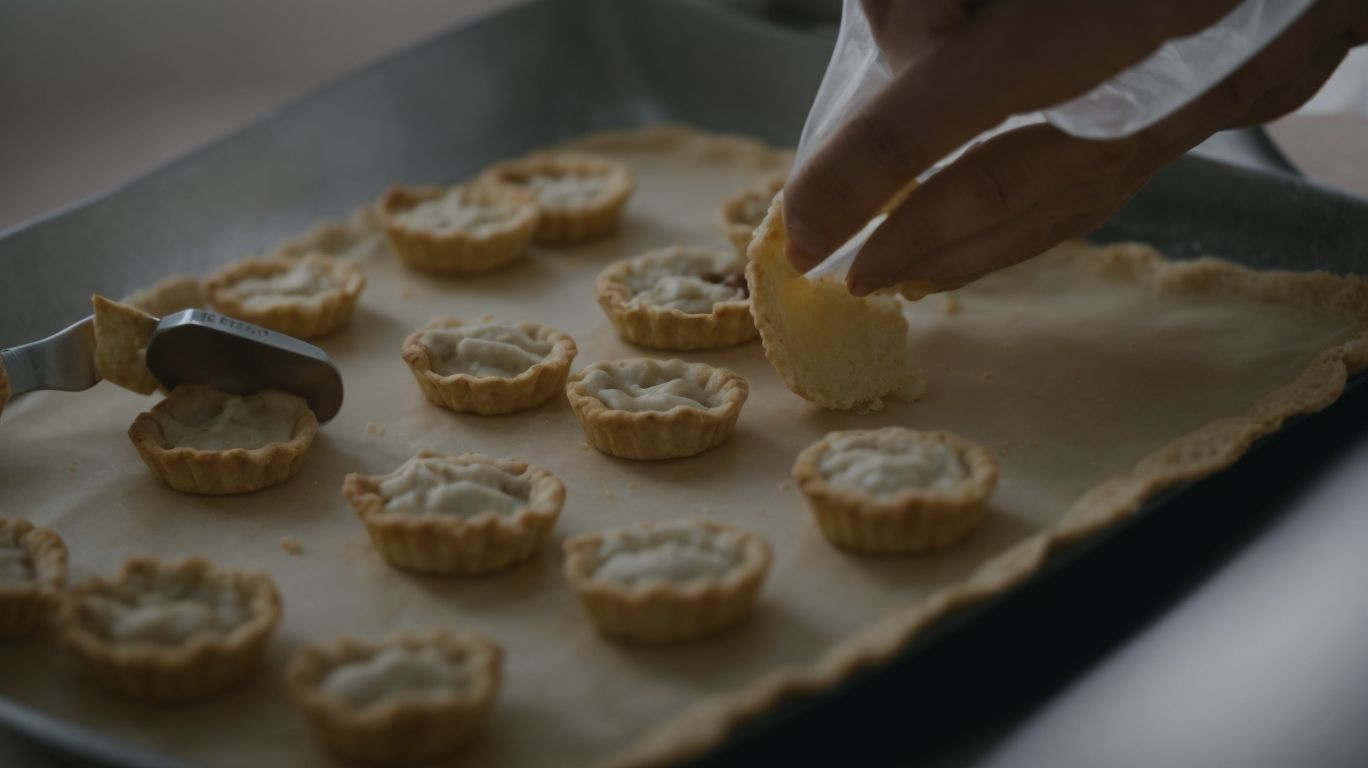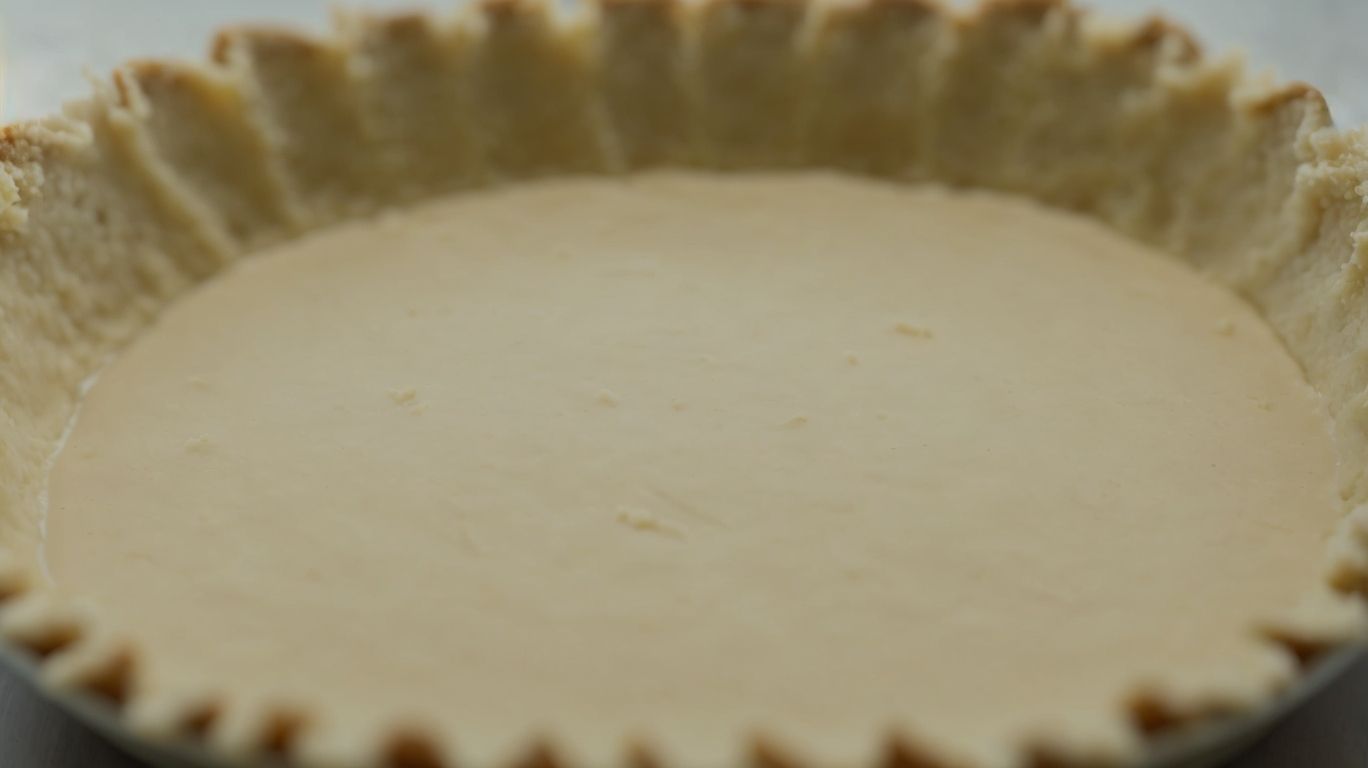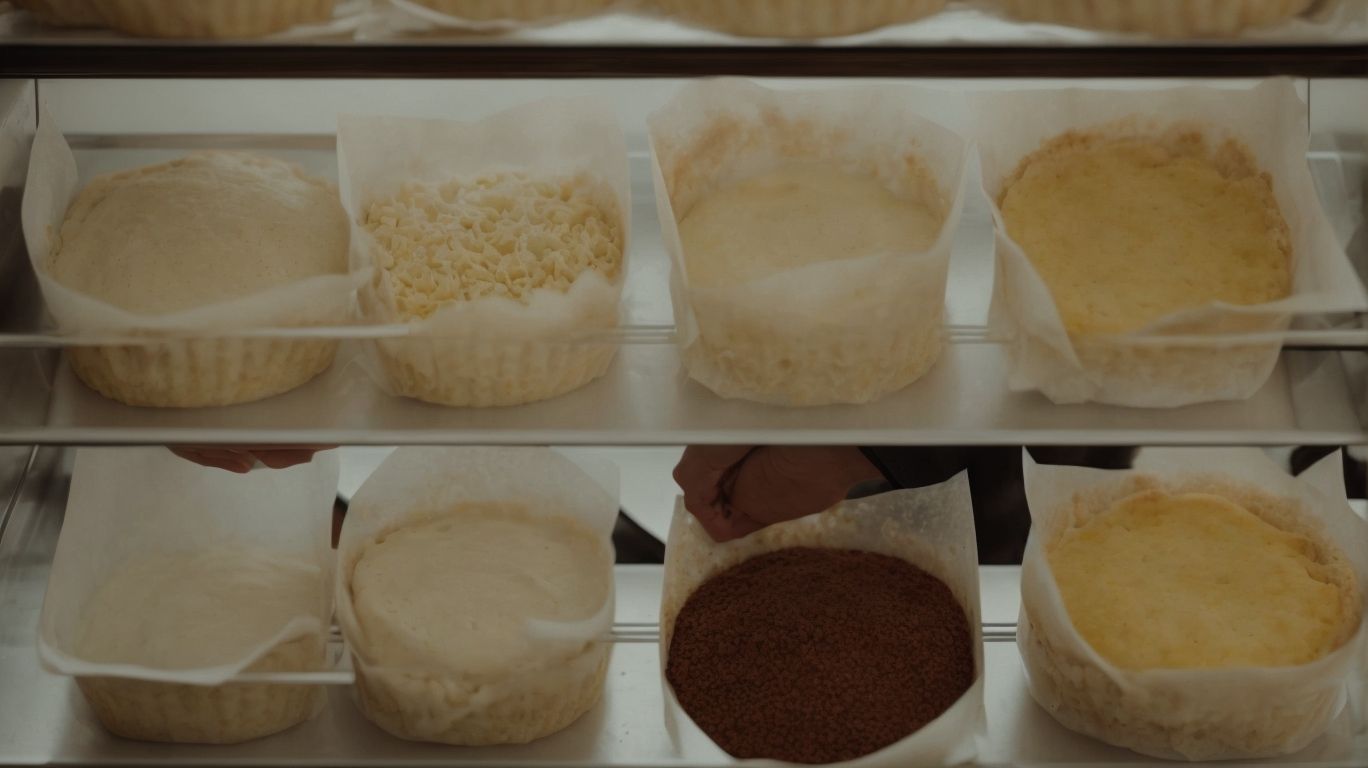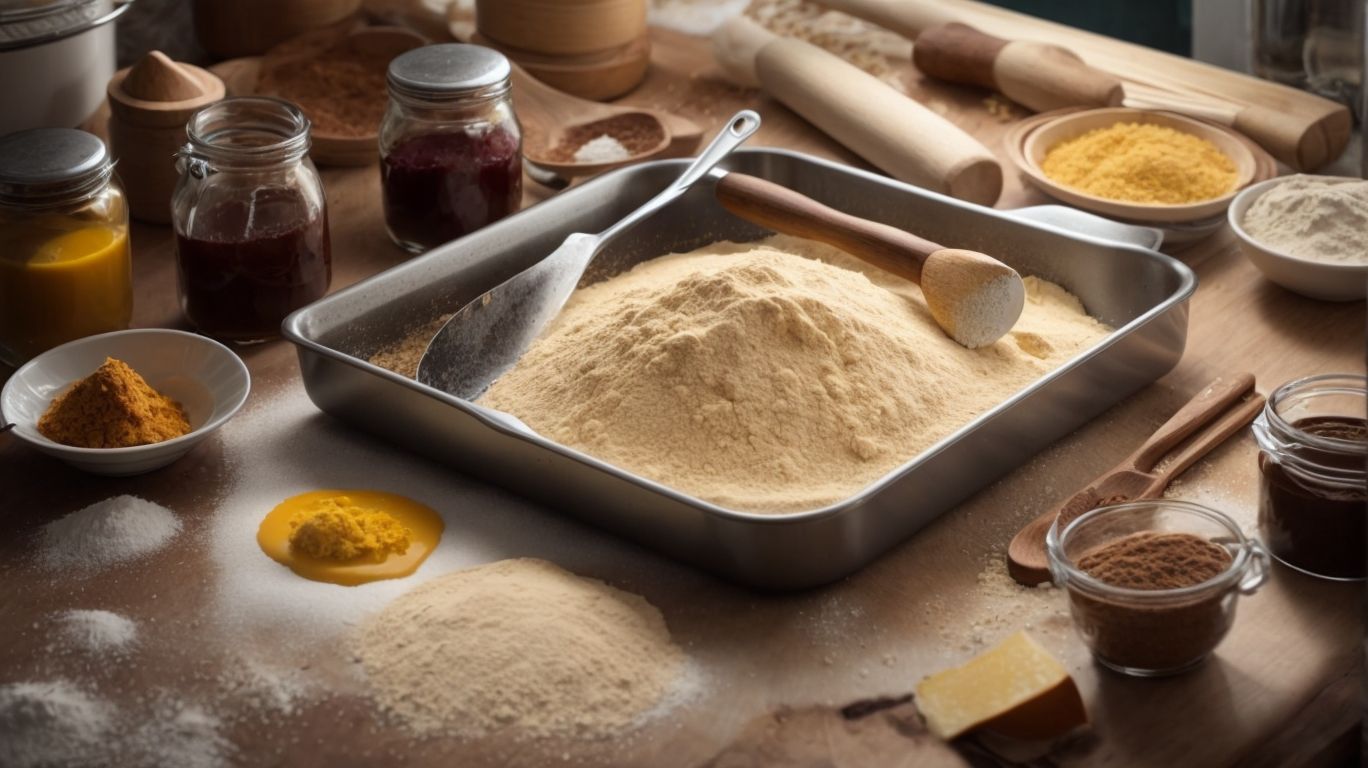How to Bake Blind Without Beans?
Are you familiar with the concept of blind baking? Whether you’re a seasoned baker or just getting started in the kitchen, blind baking is a technique that can elevate your baking game to the next level.
In this article, we will explore the ins and outs of blind baking, including traditional methods using pie weights, dried beans, or rice. We’ll also delve into alternatives such as ceramic baking beans and aluminum foil. Plus, we’ll share tips on how to blind bake without beans, so you can achieve perfect results every time.
Stay tuned to discover all the secrets of successful blind baking!
Key Takeaways:
What Is Blind Baking?
Blind baking is a baking technique used in pastry-making where a pie crust is partially or fully baked before the filling is added.
Blind baking serves multiple purposes, primarily to prevent the crust from becoming soggy when a moist filling is used. It is especially crucial for custard or cream-based pies that might not require a long baking time once the filling is added. By pre-baking the crust, it ensures that the base is crispy and holds up well under the moist fillings. Blind baking also helps in achieving a flakier and crisper crust for fruit pies by setting the structure before adding the juicy fruit filling.
Why Do We Need to Blind Bake?
Blind baking is necessary for certain pie recipes to ensure the crust is fully cooked and maintains its shape when filled.
This process involves pre-baking the pie crust before adding the filling. By doing so, you are effectively setting the structure of the crust, which helps prevent it from becoming soggy once the liquid filling is added.
Blind baking also helps to support delicate fillings like custards and creams by creating a barrier between the filling and the crust, allowing the two components to cook separately yet harmoniously.
Blind baking aids in achieving a crisp texture, especially when dealing with wet fillings that might otherwise make the crust soft and underbaked.
What Are the Traditional Ways of Blind Baking?

Credits: Poormet.Com – Ethan Allen
Traditional methods of blind baking involve using various techniques to weigh down the crust and bake it until golden brown.
One common technique is to utilize pie weights to ensure the crust maintains its shape during baking. By placing parchment paper or foil over the dough and adding the weights, this method prevents the crust from puffing up or shrinking excessively. Additionally, monitoring the crust’s color change is essential to avoid over or under-baking. A golden-brown hue indicates the crust is ready while a pale color signifies it needs more time. To achieve even heat distribution, rotating the pie during baking helps ensure every part of the crust cooks uniformly.
Using Pie Weights
One of the common methods for blind baking involves using ceramic or metal pie weights to prevent the crust from puffing up during baking.
When blind baking a pie crust, the weights play a crucial role in maintaining the shape of the crust, especially with fillings that don’t need further baking. Ceramic pie weights are ideal for conducting heat evenly, while metal pie weights are durable and reusable, lasting for many baking sessions.
These weights are placed on a sheet of parchment paper or aluminum foil over the crust to weigh it down before baking. Since they distribute heat evenly, they assist in preventing the crust from rising or bubbling, resulting in a beautifully formed base for various pie fillings.
Using Dried Beans or Rice
Another traditional approach to blind baking is using dried beans or rice as makeshift pie weights to hold the crust in place.
Blind baking, also known as pre-baking, is a technique used to bake a pie crust without the filling. By using dried beans or rice, the weight evenly distributes heat across the crust, preventing it from puffing up or shrinking during baking. This cost-effective method ensures a beautifully crisp and golden crust.
To avoid the crust sticking to the pan or the weights, it’s crucial to line the crust with parchment paper before adding the beans or rice. This creates a barrier between the dough and the weights, making it easier to remove them after pre-baking.
Using Parchment Paper and Sugar
A creative way to blind bake without beans is to line the crust with parchment paper filled with sugar to weigh it down and achieve a golden brown finish.
One of the key benefits of using sugar instead of traditional pie weights or baking beans for blind baking is its ability to not only efficiently hold down the crust but also contribute to the final color and texture of the baked pastry. The sugar acts as a heat conductor, helping to distribute heat evenly across the crust, resulting in a uniformly baked base.
The natural caramelization properties of sugar lead to a gorgeous golden hue on the crust, imparting a delightful sweetness and crispy texture that complements the fillings perfectly.
What Are the Alternatives to Blind Baking with Beans?
Plus using beans, there are alternative methods like ceramic baking beans or aluminum foil filled with sugar to achieve similar blind baking results.
When using ceramic baking beans, their dense weight helps in preventing the pastry crust from rising during the baking process, ensuring a flat and evenly cooked base. Similarly, aluminum foil filled with sugar provides a cost-effective solution that many home bakers prefer. This method involves crumpling aluminum foil and filling it with sugar to weigh down the crust. However, it differs from ceramic baking beans as the sugar will melt during baking, leaving a slightly sweet residue on the pastry. Both techniques are effective in creating a firm base for various pies and tarts.
Using Ceramic Baking Beans
Ceramic baking beans are a popular choice for blind baking in ceramic pie plates, ensuring an even bake and stable crust, especially when using precision ovens like NEFF.
These baking beans are made from high-quality ceramic material that holds and distributes heat evenly throughout the crust, preventing it from rising or bubbling excessively during baking.
This ensures that your pie or tart shell maintains its shape and structure, resulting in a professional-looking, flaky pastry every time.
Ceramic baking beans are versatile and can be used multiple times, making them a cost-effective investment for avid bakers.
Using Aluminum Foil and Sugar
An alternative to traditional methods, blind baking with aluminum foil filled with sugar can help achieve a perfectly baked crust following a buttery and flaky recipe.
When embarking on the blind baking process for your pie or tart crust, the use of aluminum foil plays a crucial role. By placing the aluminum foil filled with sugar on top of the pastry dough, a barrier is created that prevents the crust from rising too much or forming air pockets during the initial baking phase.
This technique is particularly useful for recipes that call for a delicate, flaky texture. The buttery essence of the crust is preserved through this method, as the sugar absorbs excess moisture while also providing gentle weight and pressure to the dough.
Using Pie Crust Shields
Pie crust shields are a convenient tool to prevent excessive browning and ensure even heat distribution during blind baking, especially when butter content is high in the recipe.
One of the main benefits of using pie crust shields is their ability to regulate the heat exposure to the crust. By providing a barrier around the edges of the pie, they prevent the crust from getting too dark or over-baked before the filling is fully cooked. This helps in achieving a perfect balance where the filling and crust finish baking at the same time, resulting in a harmonious texture and taste.
How to Blind Bake Without Beans?
Blind baking without beans can be achieved by using substitutes like rice flour or cornstarch to maintain a buttery and crisp crust.
When blind baking, the purpose of using rice flour or cornstarch is to provide weight and stability to the crust during the baking process. While beans are commonly used as weights to prevent the pastry from rising, these alternative ingredients serve the same function without imparting their flavor onto the crust. The rice flour and cornstarch form a barrier between the pastry and the heat, allowing the crust to bake evenly and develop that desired golden-brown color and texture.
Using Rice Flour or Cornstarch
Rice flour or cornstarch can effectively replace beans in blind baking, offering a gluten-free option that aids in crust development and texture.
When blind baking, using rice flour or cornstarch as weights helps prevent the crust from puffing up or becoming misshapen. Unlike beans, these substitutes do not retain moisture, ensuring a crispier crust. Rice flour is known for its finer texture, which can result in a smoother bottom crust. On the other hand, cornstarch has excellent thickening properties, enhancing the structural integrity of the crust. Both options are versatile and can be easily stored for future use, making them convenient alternatives for those with gluten sensitivities.
Using Uncooked Rice or Pasta
Uncooked rice or pasta can serve as makeshift pie weights for blind baking, regulating dough temperature and ensuring an evenly baked crust.
Having uncooked rice or pasta on hand for blind baking is a clever way to prevent crusts from puffing up or shrinking excessively during the baking process. Placing these pantry staples on a layer of parchment paper atop the dough helps distribute heat evenly, resulting in a golden-brown, beautifully cooked base. By applying gentle pressure and filling the pie crust with these items, the dough remains in place, preserving its shape and creating the perfect vessel for delicious fillings.
Using Rolled Oats
Rolled oats can be used as an alternative to beans for blind baking, offering a hearty option that complements buttery crust recipes.
When used in blind baking, rolled oats provide a unique texture to the crust, adding a delightful crunch and nuttiness that perfectly contrasts the buttery richness of the pastry. The oats also play a key role in distributing heat evenly during the baking process, helping to prevent the crust from puffing up or becoming soggy. Their compatibility with butter-based recipes makes them a versatile and wholesome choice for both sweet and savory tarts and pies.
What Are the Tips for Blind Baking Without Beans?

Credits: Poormet.Com – Sean Smith
When blind baking without beans, it’s essential to chill the pie crust beforehand to prevent shrinkage and use alternative weights like rice or beans.
Chilling the pie crust is crucial as it helps maintain the shape during the initial stages of baking, creating a sturdy base for the filling. This process also minimizes the chances of the crust slumping or losing its form while baking without the support of beans.
Using rice or beans as a substitute weight ensures that the crust retains its structure and bakes evenly, providing a crisp and flaky texture. Ensuring even heat distribution in the oven by rotating the pie dish during baking can prevent hot spots and help achieve a perfectly baked crust.
Chill the Pie Crust
Before blind baking, ensure the pie crust is thoroughly chilled to prevent gluten development and maintain the meringue’s stability during baking.
This crucial step in pie-making plays a significant role in achieving that perfect, flaky crust. Chilling the pie crust before blind baking helps to relax the gluten in the dough, which, if not controlled, can result in a tough and chewy texture.
By keeping the dough cold, you are effectively managing gluten development, ensuring a tender and crisp outcome. This controlled temperature also prevents the butter in the crust from melting too quickly, allowing it to create steam during baking, which contributes to the crust’s light and airy consistency.
Use a Parchment Paper Lining
Lining the crust with parchment paper aids in blind baking by maintaining the crust’s shape and preventing sticking, especially when the crust is at room temperature.
Parchment paper acts as a barrier that shields the crust from direct heat, promoting even cooking and preventing it from becoming overly browned or burnt. This ensures that the crust achieves a perfect golden hue without any undesirable dark spots. Using parchment paper in blind baking helps to lock in moisture within the crust, resulting in a tender, flaky texture that complements the filling beautifully. By creating a protective layer, parchment paper ensures that the heat is evenly distributed, leading to consistent baking results each time you prepare your favorite pies or tarts.
Prick the Bottom of the Crust
Pricking the bottom of the crust with a fork before blind baking helps release steam, prevent air bubbles, and promote even baking in the oven.
When you prick the crust bottom, it allows steam to escape during baking, preventing the crust from puffing up or forming air pockets. This simple technique ensures that the pastry cooks evenly and crisps up uniformly. By creating tiny holes through pricking, you also help the crust maintain its shape as it bakes, avoiding distortion or slumping.
Use a Heavy Baking Sheet
Placing the pie crust on a heavy baking sheet supports even heat distribution, prevents over-browning, and ensures the crust maintains its shape during blind baking.
Heavy baking sheets are designed to retain heat effectively, which is crucial in blind baking to achieve a perfectly cooked crust. The weight of the baking sheet helps in regulating the temperature throughout the baking process, reducing the risk of unevenly baked or partially soggy crusts.
The sturdiness of a heavy baking sheet acts as a shield, protecting the delicate crust from direct heat exposure that could lead to burning or shrinking. This protection ensures that the crust cooks uniformly and crisps up beautifully without losing its form or structure.
Watch the Time and Temperature
Monitoring the oven temperature and baking time is crucial in blind baking to prevent under or over-baking, especially when butter content is high in the recipe.
Temperature control plays a vital role in blind baking as it ensures that the crust sets properly without burning or becoming too soft. The right temperature helps in controlling the rate at which the butter in the dough melts, leading to the desired flakiness and texture.
Timing is equally important, as it determines the doneness of the crust and prevents a soggy bottom. Over-baking can result in a tough and dry crust, while under-baking may leave the crust raw in the center. Finding the perfect balance between time and temperature guarantees a beautifully baked shell for various sweet and savory dishes.
What Can You Use Instead of Beans for Blind Baking?

Credits: Poormet.Com – Edward Clark
In the absence of beans, viable options for blind baking include ceramic baking beans, rice flour, sugar, and even marbles as weights to ensure a well-baked crust.
For those looking for a more professional touch, ceramic baking beans are an excellent choice due to their ability to distribute heat evenly and prevent shrinkage during the baking process. Rice flour is another fantastic option that not only provides weight but also adds a subtle nutty flavor to the crust.
Alternatively, using sugar as a blind baking weight can result in a sweeter, more delicate crust that pairs well with fruit-based fillings. Experimenting with marbles can bring a unique twist to your baking, offering a quirky presentation and the added benefit of easy removal without any mess.
Ceramic Baking Beans
Ceramic baking beans are a reliable choice for blind baking, especially in ceramic pie plates or specialized ovens like NEFF for consistent and well-baked results.
These baking beans excel in distributing heat evenly during the baking process, preventing the pie crust from puffing up unevenly or collapsing. Their heat retention properties ensure that the pastry is cooked through properly, leading to a crispier and flakier crust.
Ceramic beans are suitable for various sizes and shapes of pie plates, providing versatility in usage. Whether you have a standard round pie dish or a fancy decorative plate, these baking beans can adapt effortlessly.
Using Rice Flour or Cornstarch
Rice flour or cornstarch serve as effective alternatives to beans in blind baking, offering gluten management benefits and enhancing crust texture.
When used as substitutes for traditional pie weights like beans, rice flour, and cornstarch provide a gluten-free option for individuals with dietary restrictions. Due to their fine textures, these ingredients help prevent the crust from puffing up or shrinking during the baking process, resulting in a crispier and more even crust.
Both rice flour and cornstarch are versatile options that can be used in a wide range of recipes, from flaky pie crusts to buttery tart shells. Their neutral flavors make them compatible with sweet and savory fillings alike, ensuring that the essence of the main ingredients shines through in the final dish.
Uncooked Rice or Pasta
Uncooked rice or pasta can be utilized as improvisational weights for blind baking, regulating dough temperature and ensuring an evenly baked crust.
These pantry staples are particularly handy for maintaining an even heat distribution during blind baking, preventing the dough from puffing up or slumping. By using rice or pasta, the weight helps create a firm crust structure while also absorbing excess moisture, resulting in a crispy and flaky texture. Their small granular size allows for better adherence to the dough, offering more efficient insulation compared to traditional pie weights.
Rolled Oats
Rolled oats offer a unique alternative to beans for blind baking, providing a hearty texture and complementing butter-rich crust recipes.
When using rolled oats as weights in blind baking, they not only add a delightful nutty flavor to the crust but also aid in even heat distribution, ensuring that the crust bakes evenly. This makes them particularly suitable for recipes with delicate crusts that require a gentle and consistent baking process. Rolled oats are versatile and work well with various types of crusts, from flaky pastry to shortcrust, enhancing the overall taste and texture of the final baked goods.
Aluminum Foil and Sugar
Blind baking using aluminum foil filled with sugar offers a convenient approach to achieving a well-baked crust that complements buttery and flaky recipes.
When you blind bake a crust with aluminum foil and sugar, the foil acts as a barrier that prevents the crust from getting soggy or losing its shape during the initial baking stage. The sugar not only provides weight to keep the crust flat but also aids in even heat distribution, resulting in a perfectly crisp texture.
This technique is particularly beneficial when making custard or fruit-filled pies as it ensures that the crust remains crisp and flaky even after the filling is added and baked. The gentle sweetness from the sugar can also subtly enhance the overall flavor profile of the pastry.
Frequently Asked Questions
How to Bake Blind Without Beans?
1. What is the purpose of using beans when baking blind?
Beans are often used when baking blind to weigh down the crust and prevent it from rising or shrinking during the baking process.
2. Can I substitute beans with other ingredients?
Yes, you can use other pantry staples such as rice, lentils, or even sugar to weigh down the crust when baking blind.
3. How do I prepare the crust before baking blind without beans?
Before baking, make sure to prick the pastry crust with a fork to prevent air bubbles from forming. You can also blind bake the crust for a few minutes without any weights to help set the crust.
4. How do I ensure the crust doesn’t stick to the pan without using beans?
To prevent the crust from sticking, make sure to line the pan with parchment paper or foil before adding the weights. This will make it easier to remove the weights and the crust after baking.
5. How do I know when the crust is ready when baking blind without beans?
The crust is ready when it turns golden brown and feels firm to the touch. It should also pull away from the sides of the pan slightly.
6. Can I reuse the beans after baking blind?
Yes, you can reuse the beans as long as they have not come into contact with raw dough or ingredients. Make sure to let them cool completely before storing them in an airtight container for future use.

